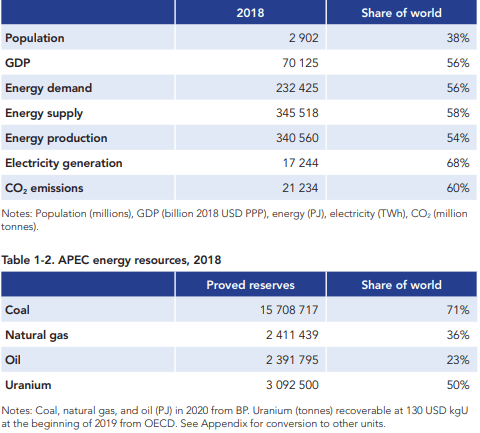Asia-Pacific Economic Cooperation (APEC) is a regional economic forum that promotes balanced and sustainable economic growth.
To this end, APEC member economies meet to discuss and cooperate on economic and social issues such as the well-being of their people, finance, health, food, education and energy.
Who are APEC members? It has 21 member economies spanning both sides of the Pacific Ocean. It includes Australia; Brunei Darussalam; Canada; Chile; China; Hong Kong, China; Indonesia; Japan; Republic of Korea; Malaysia; Mexico; New Zealand; Papua New Guinea; Peru; Philippines; Russia; Singapore; Chinese Taipei; Thailand; United States; and Vietnam.
APEC economies account for more than 38% of the world’s population and 56% of global economic activity, with strong economic trade ties around the world.
APEC statistics, 2018
According to a report released by the forum itself, APEC’s role in the global energy market is indispensable. It accounts for 56% of global energy demand, 58% of global energy supply and 68% of global electricity generation. APEC is responsible for 60% of global CO2 emissions.
APEC
In addition, APEC economies are home to a significant amount of known energy reserves. However, in the case of oil and gas, most of the world’s reserves are located outside APEC.
Many APEC economies have participated in the United Nations Framework on Climate Change (UNFCCC) process, the annual Conference of the Parties conventions, and have proposed increasingly ambitious decarbonization targets in recent years.
Since the latest outlook, published in 2019, population, GDP, energy demand, supply, production, electricity generation and CO2 emissions in the APEC region have grown.
![]()

